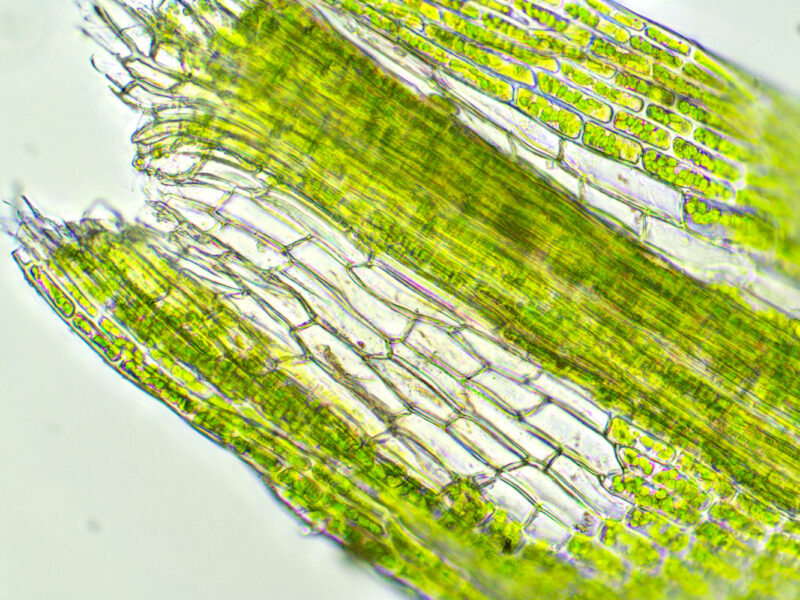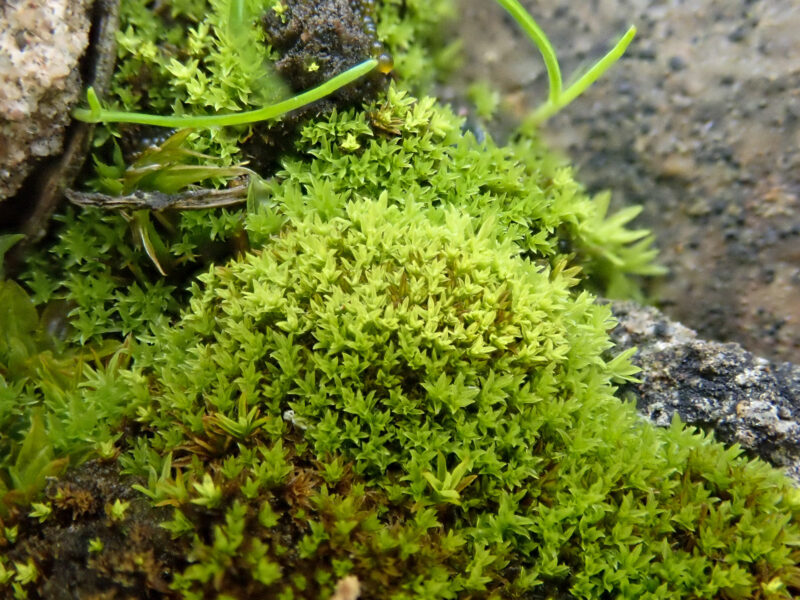Identification notes
This little moss was added to the British and Irish lists in 2021 and many bryologists got to know it for the first time at the BBS AGM near Barmouth in September the same year. It was even found growing on a path at Plas Caerdeon, the HQ for the meeting.
It has neither distinctive looks nor conspicuous habitat and if you pick it up you would be forgiven for assuming it to be Barbula unguiculata, as plants are about the same size and colour. So, what should you be looking for in the field to identify candidate B. campylocarpum? First, its leaves tend to look a little narrower than B. unguiculata, they taper to the tip (rather than being rounded) and their margins are plane, not recurved. The nerve is not as distinct and although it may be slightly excurrent, it does not have the very stout cusp of B. unguiculata.
If you are lucky, you may spot some stems with hints of orange. However, this is not a reliable character, and many will be green. If you look really closely though, you may see that stems look a bit silvery or metallic where the leaf bases lie against them. This is because of an unusual patch of enlarged hyaline cells present in the lower leaf – under the microscope this is very striking and rather window-like – and will help to affirm B. campylocarpum.
B. campylocarpum appears to have a specialised habitat niche. On rocky, sloping footpaths and bridleways in lightly to deeply shaded situations in deciduous woodland, it can be found on barish pockets of soil around stones embedded in the path, also sometimes where a thin veneer of soil has accumulated on the stone itself. Fissidens bryoides is a common associate.

















